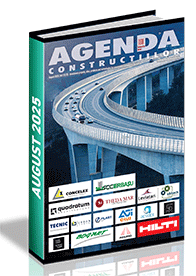| ANALYSIS: IT development creates unprecedented opportunities in business |
| English Section Publicat de Elena Icleanu 18 Nov 2016 14:56 |
 Companies and, also, their products, transportation and marketing face unprecedented transformations in the current era of technological and communication development, in which more and more devices and equipment can connect to the internet and the products can be designed and developed more quickly and can reach the market with astonishing speed. We are going through a period where all companies are becoming digital and the technology creates unprecedented opportunities in business, but digital transformation reflects changes that occur in all sections of society under the influence of the Internet and related technologies. Digital transformation is no longer a novelty even for companies specialized in construction, and for some managers it became a priority, as these transformations can change the entire business. According to the estimates of international experts in IT and communications, it is expected that by 2025 more than 25% of the global economy to be digital. Digital transformation affects not only the business but the whole society, says Joe Wilson, Marketing & Operation Director for Central and Eastern Europe in the North American giant Microsoft. The manager refers to this period as the fourth industrial revolution, that has already changed the essence and lifestyle of this age, and which already combines technologies such as nanotechnology, 3D printing, mobile devices etc. This fourth industrial revolution also consists in the development of connected systems, in which the sensors and various devices gather information and communicate with each other. These changes are already happening and every business must adapt and take part in them. At the basis of the digital transformation are three concepts, namely data, analysis and the "cloud computing", which, together with the new concept of "Internet-of-Things" (IoT) are the basis of a new society in which the web is ubiquitous and more and more objects communicate with each other. International estimates indicate that there will be 23 to 24 billion devices connected by 2019, which will generate more data and further analysis, hence almost infinite possibilities. Companies and, also, their products, transportation and marketing face unprecedented transformations in the current era of technological and communication development, in which more and more devices and equipment can connect to the internet and the products can be designed and developed more quickly and can reach the market with astonishing speed. We are going through a period where all companies are becoming digital and the technology creates unprecedented opportunities in business, but digital transformation reflects changes that occur in all sections of society under the influence of the Internet and related technologies. Digital transformation is no longer a novelty even for companies specialized in construction, and for some managers it became a priority, as these transformations can change the entire business. According to the estimates of international experts in IT and communications, it is expected that by 2025 more than 25% of the global economy to be digital. Digital transformation affects not only the business but the whole society, says Joe Wilson, Marketing & Operation Director for Central and Eastern Europe in the North American giant Microsoft. The manager refers to this period as the fourth industrial revolution, that has already changed the essence and lifestyle of this age, and which already combines technologies such as nanotechnology, 3D printing, mobile devices etc. This fourth industrial revolution also consists in the development of connected systems, in which the sensors and various devices gather information and communicate with each other. These changes are already happening and every business must adapt and take part in them. At the basis of the digital transformation are three concepts, namely data, analysis and the "cloud computing", which, together with the new concept of "Internet-of-Things" (IoT) are the basis of a new society in which the web is ubiquitous and more and more objects communicate with each other. International estimates indicate that there will be 23 to 24 billion devices connected by 2019, which will generate more data and further analysis, hence almost infinite possibilities. |
ABONARE REVISTA (click aici): PROIECTE | INVESTITII | REVISTE | INDEX COMPANII
DATE DE CONTACT: Agenda Constructiilor & Fereastra - Tel/Fax: 021-336.04.16, 031-401.63.88




















































